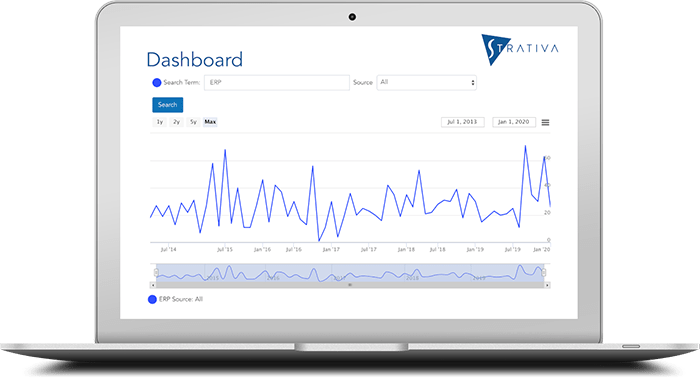
The major enterprise software providers promote their pre-built integration as a selling point in capturing new business from existing clients. They argue that, rather than attempting to integrate different systems from different providers, organizations should buy everything from a single provider and get the integration for free.
But do suites always win? Based on recent deals we’ve observed, it appears that the integration story is not resonating with buyers as it once did. There are several reasons for this.
- Vendor suites may not be as well integrated as vendors claim. This is especially true when the vendor’s suite comprises pieces that they acquired. Both Oracle and SAP have made many acquisitions over the past decade. Is the integration of these piece parts really seamless? In some cases, yes. But in many cases, no.
- Integration an IT-priority, not a business priority. Many software selection projects these days are being led by business users. This has always been desirable, but it is especially true when the focus moves outside of core ERP to systems such as CRM, supply chain management (SCM), and human capital management (HCM). IT leaders generally put a high priority on integration because it makes their job easier (notwithstanding point No. 1). Therefore, when IT leads the vendor selection effort, integration rises near the top of the selection criteria. When business units lead the selection, they tend to rank process alignment, ease of use, and maximizing adoption higher than they do integration with back-end systems. Whether rightly or wrongly, business leaders often want to pick the best system for the job and then have the IT organization make it work as part of the portfolio.
- Integration has become much easier. The integrated suite story is less convincing today than it was even 10 years ago, when the choices for integration were either brittle point-to-point flat file interfaces, complex middleware, or integration hubs that required substantial investment before the first interface could be built. Today, application programming interfaces (APIs) and web services make integration much easier than it used to be. SaaS providers, in particular, have become very good at integrating with other systems, whether cloud or on-premises, as this is a common requirement among their customers. In other words, the problem has gotten smaller.
- Not all integration points are equally critical. In a recent CRM selection, the incumbent ERP vendor made the claim that there were something like 300 integration points between the vendor’s ERP and CRM systems. Did the buyer really want to program all these touch points between ERP and some third-party CRM provider? It’s a good sales pitch. But when further investigation was performed, it became clear that there were only a handful of integration points that really mattered to the customer. For example, if pricing only changes once a year, is it really necessary to have the CRM pricing tables automatically updated from the ERP pricing tables? Investigate your real needs for integration and often you will find they are much less than your incumbent vendor will claim.
In addition, think about the benefits of not having all of your enterprise system “eggs” in one basket. There are benefits to having fewer vendors in the application portfolio. At the same time, it is possible to have too few––to grant too much power to a single vendor. Behind closed doors, suite vendors talk about how much “share of wallet” they have among their customers. But is it in your best interest to have so much of your IT spending wrapped up with a single provider?
Situations Where Integration Is a High Priority
There are situations where integration should be a high priority. For example, it is not wise to choose an accounts payable module from one vendor and a purchasing module from another. These functions are too tightly coupled. Furthermore, purchasing and accounts payable are generally not systems of strategic advantage. Customers are better off buying them from a single ERP vendor, implement them, and move on to more strategic opportunities.
Likewise, in supply chain management, it is not a good idea to have sales and operations planning, advanced planning, and event management selected from different vendors. These functions form a closed loop with a single data model. Material planners need to be able to perform these functions simultaneously and in parallel. Building interfaces to cascade information from one system to another is simply too cumbersome.
Criteria for Evaluating Integration Needs
The large integrated suite vendors are unlikely to change their message. For them, suites always win. But for buyers, a broader perspective is recommended.
- Is the system you are looking for one that must be integrated with other systems in your portfolio?
- If so, can you verify that your incumbent vendor has really integrated those two systems?
- How many integration points are really needed, and how many are nice-to-haves that could be satisfied with a simple work around?
- For those that need automated integration, how difficult would it be for another vendor to provide that integration?
- Do third-party vendors have references for the same integration with other customers?
- Do the benefits of a third-party vendor in terms of adoption, ease-of-use, and competitive advantage outweigh the benefits of pre-built integration?
Finally, is the system you are looking for one where innovation, competitive advantage, ease of use, and high adoption are top priorities? If so, the best choice may not be from your incumbent provider. The fact that the large Tier I suite vendors have been acquiring smaller best-of-breed providers is evidence that leading edge innovation is happening outside of the integrated suites.
Customers should think through the answers to these questions and make the right decisions for their businesses. If they do, many times suites will not win.
Photo Credit: www.seewellcn.com

